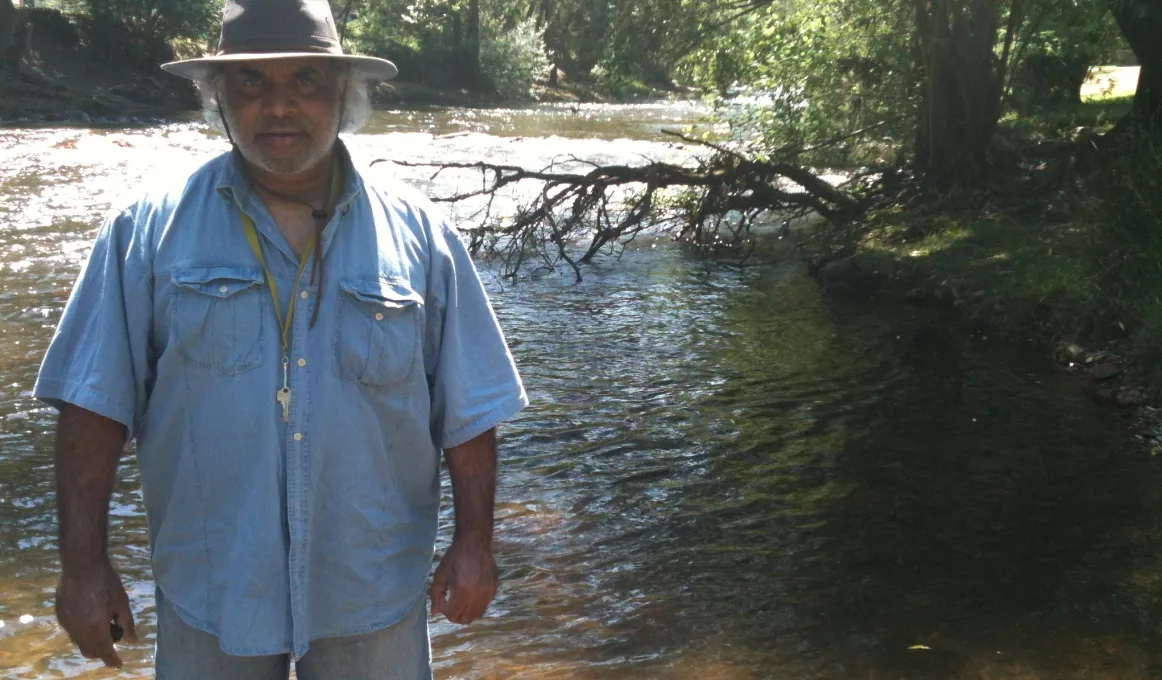Traditional Owners monitor the health of rivers and wetlands

Aboriginal peoples in the Murray-Darling Basin have been intimately connected to its river systems for thousands of years. Recognising this, the Murray-Darling Basin Authority (MDBA) recently worked with Aboriginal Traditional Owners from Deniliquin and Walgett in New South Wales and the Victorian Alps to test a method to measure the health of river and wetland places.
Aboriginal peoples in the Murray-Darling Basin have been intimately connected to its river systems for thousands of years. Recognising this, the Murray-Darling Basin Authority (MDBA) recently worked with Aboriginal Traditional Owners from Deniliquin and Walgett in New South Wales and the Victorian Alps to test a method to measure the health of river and wetland places.
The purpose of the project was to develop a tool for Aboriginal communities to consistently measure and prioritise river and wetland health so that they are better placed to negotiate for their country’s water needs.
The Aboriginal Cultural Flows Health Indicator (ACFHI) is a tool that doesn’t just test water quantity and quality.
Gary Murray, an Elder from Dhudhuroa First Nations, who helped to develop the tool and used it on rivers in the Victorian Alps, explains the difference.
"Cultural flows encapsulates the spiritual, cultural and economic aspects of our waterways from a First Nations’ perspective; it is a life to death concept,” Gary said.
“The watering of our cultural places brings, for example, a redgum to life from a seed to a tree with animals and birds. It brings Djinabis (Dhudhuroa possum skin cloaks) to keep warm, shelter for the clans from the elements, water transport canoes, weapons and carrying tools, and materials for burial rituals or an actual tree burial. This is our redgum biodiversity cycle test."
A group of 10 Traditional Owners, nominated by their respective communities, worked with the MDBA for one week to trial the ACFHI. They assessed sites along local waterways and wetlands, from Wangaratta to Falls Creek focusing on the Ovens River. Two other Traditional Owner groups trialled the ACFHI on their Country and assessed rivers, including the Barwon, Namoi, Macquarie, and Edward Rivers.
Gary Murray said the ACFHI was definitely an effective tool in assessing the state of the rivers.
"It is extremely successful and each First Nation community must make it an annual and properly resourced event across cultural flow sectors of their country," Gary said.
The MDBA said the tool was the first of its kind for Australia and the aim was that it will eventually be used in other Aboriginal communities across the Murray–Darling Basin.
Gary said he is hopeful that this opportunity will lead to further training and permanent jobs in the future.
Find out more
The ACFHI is based on the Māori Cultural Health Index (CHI). It was developed by the MDBA in consultation with Gail Tipa, the Māori researcher behind the CHI, and the Murray Lower Darling Rivers Indigenous Nations and Northern Basin Aboriginal Nations.
The MDBA has initiated this project to ensure that Aboriginal people are effectively participating in water planning and to recognise that Aboriginal people need a consistent way to assess the importance of waterways which goes beyond the usual economic and environmental indicators.